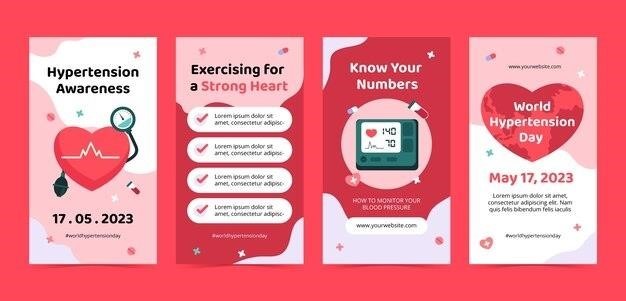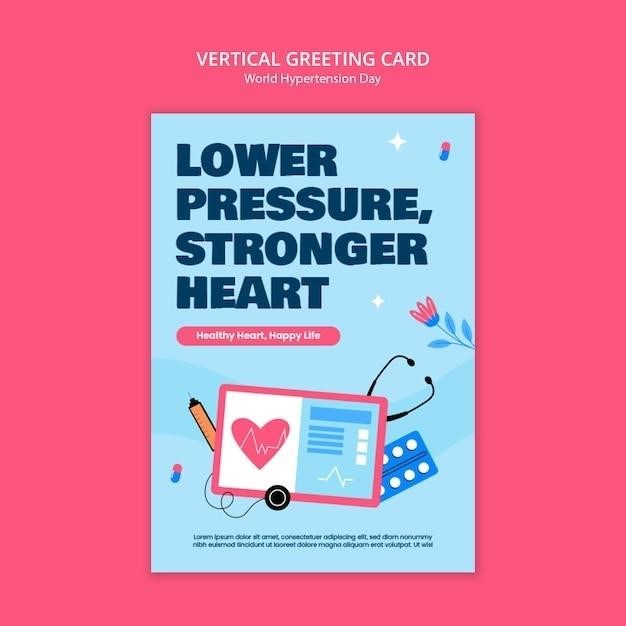
2020 BLS Provider Manual⁚ An Overview
The 2020 BLS Provider Manual offers comprehensive guidelines for Basic Life Support, updated with the latest scientific evidence and resuscitation techniques․ It serves as a key resource for healthcare providers and students․
Key Features and Content
The 2020 BLS Provider Manual is a comprehensive guide designed for single users, acting as a pre- and post-course reference․ It details single-rescuer and team basic life support skills for both in-facility and prehospital settings, incorporating step-by-step instructions and checklists for accurate care․ The manual includes the BLS Reference Card (also sold separately as product 20-1132), updated with the 2020 Guidelines for CPR and ECC․ This updated edition replaces the previous version (15-1010)․ An eBook version (20-3102) is available, mirroring the print manual and including the BLS Digital Reference Card (20-3123)․ The content reflects enhanced algorithms and visual aids for easy recall during resuscitation․ The manual ensures students are equipped with the necessary knowledge to successfully complete their BLS course․
Target Audience and Usage
Primarily intended for students enrolled in BLS courses, the 2020 BLS Provider Manual serves as an essential learning tool․ Its clear and concise format makes it ideal for both pre-course preparation and post-course review․ Healthcare professionals seeking to refresh their BLS skills or those preparing for recertification will also find the manual invaluable․ The single-user design ensures that each student has their own personal reference guide․ The manual’s practical approach, coupled with its detailed explanations and visual aids, caters to a broad range of learning styles, ensuring accessibility for all users regardless of their prior experience or background in emergency care․ Its use extends beyond the classroom, serving as a valuable on-the-job reference․
Comparison with Previous Editions
The 2020 BLS Provider Manual represents a significant update from previous editions, incorporating the latest scientific advancements and research findings in CPR and ECC․ Key algorithm changes and refined techniques reflect a more streamlined and effective approach to basic life support․ While maintaining the core principles of previous manuals, this edition streamlines information presentation for enhanced clarity and ease of use․ New visual aids and enhanced instructional materials improve understanding and retention of crucial life-saving skills․ The integration of new scientific evidence ensures that the manual’s content aligns with the most current best practices in emergency cardiac care, thus improving the quality and effectiveness of BLS interventions․ This updated version replaces previous editions (such as 15-1010), offering healthcare providers and students the most current and accurate information available․
Updates in the 2020 Guidelines
The 2020 BLS guidelines feature enhanced algorithms, improved visual aids, and incorporate new scientific evidence for improved resuscitation techniques and practices․
Changes to BLS Algorithms and Techniques
The 2020 BLS Provider Manual reflects significant revisions to basic life support algorithms and techniques․ These updates streamline the approach to resuscitation, making it more efficient and easier to follow under pressure․ Improved visual aids, such as flowcharts and diagrams, guide providers through crucial steps, minimizing confusion during emergencies․ The emphasis on high-quality CPR is reinforced throughout the revised algorithms, highlighting the importance of chest compressions and proper ventilation․ Changes also address the integration of automated external defibrillators (AEDs) into the resuscitation process, providing clear instructions on their effective and safe use․ These refinements ensure that the latest scientific evidence supports the updated BLS methods, ultimately improving patient outcomes․
Incorporation of New Scientific Evidence
The 2020 BLS Provider Manual meticulously incorporates the latest scientific research and findings in the field of cardiopulmonary resuscitation (CPR) and emergency cardiovascular care (ECC)․ This integration ensures that the manual reflects current best practices, leading to improved patient care and survival rates․ The updated guidelines are based on rigorous studies and clinical trials, providing healthcare providers with evidence-based protocols․ This commitment to scientific accuracy is crucial in a rapidly evolving field, ensuring that the information presented is reliable, up-to-date, and effective in real-world scenarios․ The incorporation of new research ensures the manual remains a leading resource for BLS training and practice․
Impact on Resuscitation Practices
The 2020 BLS Provider Manual’s updated algorithms and incorporation of new scientific evidence have significantly impacted resuscitation practices worldwide․ The emphasis on high-quality CPR, including chest compressions and rescue breaths, has led to improved outcomes in cardiac arrest situations․ The streamlined approach to BLS algorithms simplifies the process for providers, allowing for quicker and more effective interventions․ Changes in the approach to managing respiratory emergencies and the integration of updated data on the use of automated external defibrillators (AEDs) directly contribute to enhanced patient care and survival rates․ The manual’s influence extends to training programs, ensuring that healthcare professionals are equipped with the most current and effective life-saving techniques․

BLS Provider Manual Formats
The 2020 BLS Provider Manual is available in print and eBook formats, offering flexibility for learners․ Both versions include the essential BLS Reference Card․
Print Manual and its Components
The printed 2020 BLS Provider Manual offers a tangible learning resource, ideal for those who prefer a physical copy for studying and referencing․ This version provides a comprehensive guide to basic life support techniques, algorithms, and essential information for successful course completion․ The manual’s design prioritizes clarity and ease of use, making it an effective tool for both pre-course preparation and post-course review․ A key component included with the print manual is the BLS Reference Card, a handy quick-reference guide summarizing crucial steps and procedures․ This card serves as a valuable resource for immediate access to essential information during emergency situations․ The inclusion of the reference card enhances the practical application of the knowledge gained from the manual itself, solidifying learning and providing a readily available aid for real-world scenarios․
eBook Version and Digital Reference Card
A digital alternative to the print manual, the 2020 BLS Provider Manual eBook provides convenient access to the same comprehensive content on electronic devices․ This format offers portability and ease of searching, making it a practical choice for students and professionals who prefer digital resources․ The eBook mirrors the print manual’s content, ensuring consistency in learning materials․ In addition to the complete manual, the eBook version also includes the BLS Digital Reference Card, a readily accessible electronic version of the quick-reference guide․ This digital card offers the same functionality as its print counterpart, providing immediate access to vital information during emergencies or when quick review is needed․ The digital format allows for easy searching and referencing, enhancing the usability and practicality of this essential resource․ Both the eBook and its accompanying digital reference card provide a modern and efficient approach to learning and utilizing BLS guidelines․
Availability and Purchasing Options
The 2020 BLS Provider Manual is available in both print and eBook formats, offering flexibility to suit individual preferences and learning styles․ The print manual, often distributed through AHA-approved training centers, provides a tangible resource for study and reference․ The eBook offers a digital alternative, accessible through online platforms and compatible with various devices․ Purchasing options vary depending on the vendor and may include direct purchase from the American Heart Association’s online store or through authorized distributors and training centers․ Some courses may include the manual as part of the course fee, eliminating the need for separate purchase․ Prices may also vary based on the chosen format (print or eBook) and any bundled options, such as the inclusion of the reference card․ It’s advisable to check with your training center or the AHA website for the most current pricing and availability information before making a purchase․
Instructor Resources and Materials
Comprehensive instructor manuals and supplementary materials support effective BLS training, ensuring high-quality instruction and student learning․
Instructor Manuals and Training Aids
The 2020 BLS Provider Manual includes detailed instructor manuals designed to guide effective and efficient training sessions․ These manuals provide a structured approach to delivering the course content, incorporating best practices for adult learning․ They often include lesson plans, teaching strategies, and assessment tools to ensure consistency and quality across different instructors and training environments․ Instructors also have access to various training aids, such as visual aids, presentations, and interactive exercises, to enhance engagement and understanding․ Supplementary materials, such as videos and case studies, may be included to further illustrate key concepts and reinforce learning․ The resources are designed to help instructors adapt their teaching to different learning styles and ensure that all students gain a thorough understanding of BLS techniques and protocols․ These materials are essential for maintaining high standards in BLS training and certification․
Supplementary Materials and Updates
Beyond the core manual, supplementary materials enhance the 2020 BLS Provider learning experience․ These might include digital resources like interactive quizzes and simulations, allowing for self-paced review and practical application of learned skills․ Access to online videos demonstrating techniques can provide visual reinforcement․ Regular updates are crucial to reflect the ever-evolving landscape of medical science and best practices․ These updates might address algorithm changes, new research findings, or refinements to existing techniques․ The availability of these updates ensures that instructors and healthcare providers remain current with the latest recommendations for effective BLS interventions; Such supplementary materials and updates play a vital role in maintaining the currency and relevance of BLS training, optimizing resuscitation outcomes․ This continuous improvement ensures the highest quality of care․